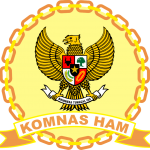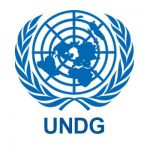 |
 |
 |
The Human Rights Based Approach to the Localization of SDGs in Indonesia
The 2030 Agenda defines the current developmental paradigm and puts international human rights at its core. Its universally applicable 17 Sustainable Development Goals (SDGs) are designed to “leave no one behind” in pursuit of development, and open up new avenues to integrate human rights into global and national policies over the next 15 years.
The realization of the 2030 Agenda requires strong accountability architecture for civil society to monitor progress and hold government to account. A robust human rights-sensitive SDG indicator framework is necessary to monitor progress for all people, everywhere. The SDGs and Human Rights are linked in a mutually reinforcing fashion. On the one hand, human rights provide insight and guidance for tackling the complex and multidimensional goals of the 2030 Agenda. On the other hand, the SDGs can serve as a tangible, results-oriented instrument for the realization of human rights.
Indonesia – the world’s fourth most populous country and third largest democracy – has taken important steps to turn the SDGs into reality by setting up SDG Secretariat and elaborating indicators that reflect national development priorities. These priorities focus on eliminating poverty, reducing inequality, and promoting peace, justice, strong institutions and climate action. As such, they have direct relevance to the human rights obligations of the country based on domestic laws and international treaties.
In order to promote human rights based approach to the national development planning in the context of 2030 agenda, the Human Rights Working Group of the UN Country Team in Indonesia, in consultation with the national human rights institution (Komnas HAM) and SDG Secretariat situated within the Ministry of National Development Planning (Bappenas), developed this document – the Analytical Framework on SDGs and Human Rights. The analytical framework is designed as a tool to monitor the progress towards developmental objectives of 2030 Agenda from the human rights perspective, using the suggested human rights based indicators.
For each of the selected SDGs (SDGs 1, 2, 3, 4, 5, 6, 8, 10 and 16), the paper offers an overview of major human rights implications globally and within the context of the national human rights obligations, and analyzes the gaps that may exist between the human rights obligations of the country and the adopted developmental targets and indicators. The paper also suggests indicators that can be used to monitor the progress towards the developmental objectives from the human rights perspective. These suggested indicators were developed based on universal standards contained in various international instruments, as well as specific recommendations offered to Indonesia by international organizations. For the purpose of this analytical framework, the Technical Guidelines for the Sustainable Development Goals Action Plan (RAN TPB) produced by BAPPENAS are used as a reference for the SDGs targets and indicators to be implemented by the Government of Indonesia (GoI).
There are nine goals presented in this analytical framework. The goals were selected in consultation with the key national stakeholders as having the most direct implications for the human rights recognized under the core international instruments, particularly the Universal Declaration on Human Rights (UDHR), the International Covenant on Economic, Social and Cultural Rights (ICESCR) and the International Covenant on the Civil and Political Rights (ICCPR). The nine human-rights related goals presented in this analytical framework are Goal 1 on ending poverty; Goal 2 on zero hunger; Goal 3 on good health and wellbeing; Goal 4 on quality education; Goal 5 on gender equality; Goal 6 on clean water and sanitation; Goal 8 on decent work and economic growth; Goal 10 on reduced inequalities; and Goal 16 on peace, justice and strong institutions.
However, it is important to note that all 17 SDGs have important human rights implications. It is therefore important to expand this approach to link the developmental objectives with human rights obligations and identify any existing gaps for the other 8 SDGs as well. This is in line with the intentions of the key stakeholders behind this document to continue working on the framework, to further elaborate the analysis contained therein and to cover, incrementally, the entirety of the 2030 Agenda and its 17 SDGs.
